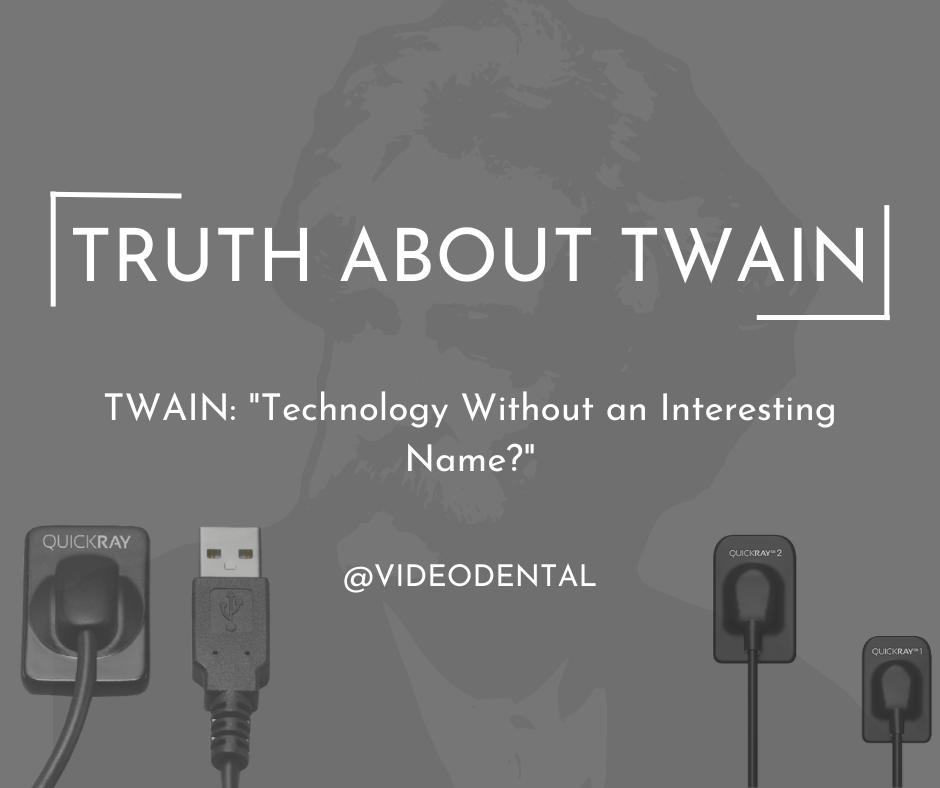
Truth About TWAIN
The Truth About TWAIN
Digital intraoral sensors are integral in a dental office’s day to day operations. They are our means to see beyond what the naked eye sees and thus aid in proper diagnosis of cases. We know that these sensors are merely receptors of x-rays coming out of the tube head. The image imprinted on the sensor is read by imaging software such as Apteryx, Dexis, Eaglesoft, Tigerview, etc.
A sensor communicates with an imaging software in 2 different ways- one is via direct integration and the second via TWAIN. Direct integration involves developing custom software driver that allows the sensor to directly communicate with the imaging software. This gives the software access to the imaging device so it can capture and process images in real-time. Think of direct integration as 2 devices speaking the same language so they understand each other. TWAIN, on the other hand, is a third-party application or protocol that acts as a bridge between the imaging software and the sensor. TWAIN allows the sensor to acquire an image and then transfer it over to the imaging software. Think of TWAIN acting as a translator between 2 devices that speak different languages.
Now that we’ve differentiated the two types of communication between the sensor and the software, which one then is better? Or should we ask, is one better than the other? Let’s take a closer look at TWAIN and find out.
Features of TWAIN:
- Standardization: TWAIN provides a standardized interface that imaging software can use to communicate with different imaging devices, regardless of the manufacturer. This means that we can use sensors from different vendors without having to worry about compatibility issues.
- Flexibility: TWAIN allows imaging software to be easily updated or replaced without requiring changes to the imaging device drivers. This means that we can update the imaging software all we want without having to replace the sensor.
- Reduced development time: By using the TWAIN protocol, imaging software developers and also sensor manufacturers can reduce the time and cost of developing custom drivers for direct integration. This allows them to focus on improving the features and functionality of their respective products.
- Improved workflow: TWAIN makes it easy for dental professionals to capture, manage, and manipulate images from multiple sources within a single imaging software application. This can help to streamline their workflow, reduce errors, and improve patient care.
- Reduced cost to practitioners- TWAIN allows us to use the imaging software we want with the sensor we want. It allows us to purchase software and sensors from different manufacturers. We are not locked into a system that will force us to spend extra $$$ for the same quality x-rays.
Disadvantages of TWAIN
While there are many advantages to using TWAIN for integrating imaging software and sensors, there are also some potential disadvantages to consider:
- Performance: Direct integration may provide better performance than TWAIN, especially when processing large or complex images. Direct integration allows the software to have direct access to the hardware, which can improve speed and reduce latency.
- Limited control: With TWAIN, imaging software has limited control over the sensor and its output image, as it is restricted by the capabilities and limitations of the TWAIN interface. Direct integration allows for more fine-tuned control over the sensor, which may mean more post processing image enhancement capabilities.
- Compatibility: Although TWAIN is a standard interface, some imaging devices may not be fully compatible with TWAIN or may require custom drivers to work properly. In some cases, direct integration may be required to ensure compatibility and optimal performance.
- Increased time spent taking x-rays: Since TWAIN is a third-party protocol, there may be additional steps necessary to capture images and return them to the imaging software. This may add a few seconds to a few minutes to your workflow compared to direct integration.
So, having said all that, is direct integration better than TWAIN? Or is TWAIN better than direct integration? The answer actually depends on you, your staff, your workflow and your finances. Both can produce good, diagnostic quality x-rays but at the end of the day, it is how you work and where you want to spend your hard-earned money that plays a big role in decision making.





